African beer in the Chad basin since the 11th century
A 134-page, highly illustrated study of traditional African beers, the ingredients and brewing techniques, and the confrontation between the pantheistic ethnic groups of North Cameroon and the Islamic kingdoms (Bornou, Kanem, Wandala, Baguirmi, Caliphate of Sokoto, etc)..
This part of Africa has an eventful and documented history since the 11th century. This outstanding background enables us to trace a fairly complete history of traditional African brewing, freed from the colonial gaze and based on written documents and African testimonies (oral traditions). This history highlights a thousand-year-old confrontation between two antagonistic socio-political systems. The system of the Chad basin ethnic groups is based on cereals, self-sufficient food production, flat social structures, and beer as a beverage of social cohesion, rituals and annual collective ceremonies. Conversely, the Islamised kingdoms, predatory by their very nature, are based on 'pagan' peoples enslavement, the trans-Saharan slave trade and centralised political powers.
This study explores the following issues :
- Why is beer brewed in the Chad basin?
- The material base for brewing beer: cereals, tubers, pulses.
- Cereal beers: eleusine, millet, fonios, sorghums, rice, maize.
- Beers from tubers and starchy roots of the Chad basin.
- Beers from pulses in Sudanese Africa.
- The beer-like beverages of the Chad area.
- The famine fermented beverages in the Chad basin.
- Sources of starch and brewing methods around Lake Chad.
- Socio-politics and brewing traditions in the Chad basin.
- Protohistory, social complexity and emerging brewing traditions.
- Modern pantheistic societies and their brewing traditions.
- Beer and the predatory economics of Islamised African societies.
- The ban on fermented beverages is primarily aimed at rituals.
- The slave hunt and the geopolitics of the Chad basin.
- Food production is provided by the "pagan" slaves.
- Muslim slave hunters but also beer drinkers.
- An ethnogenesis of slavery in the Chad basin?
- Beer in the economics and religion of the Mandara Mountains.
- Mandara Mountains, haven and promised land of the "Highlanders".
- Beer among the Mafa in 1985-2000 (Müller-Kosack).
- The beer among the Mofu-Diamaré in 1968-1988 (Vincent, 1975).
- The beer of the twins among the Mofu, the Giziga and the Zulgo.
- Beer among the Kapsiki in 1971-1973 (van Beek).
- Beer among the Mada in 1956-58 (Guingnet).
- Beer among the Hidé (Xdi) in 1969-70 (Eguchi).
- The beer of the Margi in western Mandara, 1959-1987 (Vaughan).
- Beer in the “little yaérés Triangle”.
- Beer among the Tupuri 1950-2000 (Masseyeff & al., Garine).
- Beer among Muzey and Masa, 1962-63, 1958-59 à 2010 (Garine).
- Beer among the Duupa of the Poli massif, 1988-93 (Garine).
- Beer drunkenness and violent outbursts ?
- Migration of peoples, diffusion of plants and brewing techniques.
⇩ Ch. BERGER, African beer history around Lake Chad - 2022.pdf ⇩
Abstract:
This study about beer focuses on an African area encompassing northern Nigeria, Cameroon and north-western Chad, i.e. the basin once filled by the gigantic Lake Chad or mega-Chad. The beer under discussion has been brewed on African ground for several millennia, long before the industrial version that was introduced to Africa with European colonisation, the one we commonly drink today in this part of Africa. Traditional African beer has been for a very long time, and still is, part of the political economy of African societies in the Chad basin.
This leads us to a second statement: the traditional African brewing get its own history. The phrase refers to all the technical knowledge, social and religious practices that specifically involve beer. The traditional (or autochthonous) African beer cannot be reduced to brewing skills, nor even to manners of drinking. It permeates vast areas of collective life: the religious sphere, the political field, the economic exchanges, the social structures, etc. African brewing traditions are as evolving and polymorphous as the other facets of African social history. African beer has as much credentials as Western beer and deserves to have its history written down: a formidable project undertaken by African specialists since the 1980s.
Why the lake Chad basin? From the point of view of African history, this region can be compared to the Niger Basin, to Eastern Africa (Ethiopia, Sudan) or to the Great Lakes (Uganda, Rwanda, Burundi, Northern Tanzania) (General history of Africa, IV). All these regions, where the ancestral presence of beer and a rich socio-political past are combined, call for a study of their brewing traditions. The lake Chad basin has inherited a turbulent geopolitical history dating back to the 11th century, punctuated by the foundation of more or less perennial kingdoms, by the confrontation between pantheistic and Islamic populations, against a backdrop of far-reaching technical, social and political developments3. This historical depth has generated a rich documentation of African origin since the 16th century (Ahmed-Baba, Tarikh el-fettach, Tarikh es-Soudan, Ibn Furtu, Chronicles of Bornu, ...) and in the 18-19th century (Usman dan Fodio, Bello, ...), then colonial (Denham, Barth, Clapperton, ...). Since the 20th century, it has given rise to an in-depth study of this African region, its history, geopolitics and ethnology.
Beer is one of the common themes linking the complex and very different societies of the Chad basin over the long term. Its history raises pivotal issues: the evolution of cultivated plants, the geopolitics of this African area, the migration of peoples, techniques and ideas, the thousand-year-old confrontation between pantheistic and Islamic societies. The question of fermented beverages stands at the heart of these evolutions and age-old conflicts, especially the main one, beer. It crystallises critical political and economic issues for peoples who feed mainly on the cereals from which beer is brewed.
In Africa as elsewhere, beer embodies three major dimensions of human history: technological, socio-economic and religious. The brewing traditions of the Chad basin are based upon these three fundamentals. No beer without starch. Cereal growing, brewing techniques and social organisations make up the backbone of an African beer civilisation. The social economy of beer cannot be understood without the omnipresence of cereals and other starchy sources, whether cultivated or wild (chap. 3), without food techniques (chap. 4), social structures (chap. 5), festive logics, and ultimately beliefs and one of their main material supports, namely beer (festive drunkenness, ritual libations, agrarian ceremonies linked to agricultural cycle of the grains, beer offering to the ancestors, etc.) (chap. 6, 7 and 8).
The major political trends in this region since the 11th century have been marked by the structural confrontation between abstinent Islamic elites and beer-brewing pantheistic peoples. Over the centuries, the issue of fermented beverages, mainly beer, has become a conflictual one. It sealed a more radical divorce between the productive economy of the pantheists and the predatory economy of the Muslims and its institutionalised slave system. The cleavage between beer and milk reflects the tragedy that has ravaged Africa for more than a millennium: the hunting of 'pagan' slaves. This study sheds light on the political economy that has had a lasting impact on the history of beer in Sudanic Africa since the 11th century.
An archaeology of beer in the Chad basin is sketched out thanks to the studies of specialists of this region. They describe the social economy of beer among two groups of populations: those of the Mandara Mountains and those of the south-eastern floodplain (Diamaré). Both ecosystems have provided shelters from slave raids, but also a promised land for inventive farmers whose cultural beverage was - and still is - beer.
To conclude on a long-term historical phenomenon, migrants, most of whom were pantheists, fled in waves southwards to escape the slave raids carried out in the Sudanian zone by the Islamised kingdoms (chap. 10). They encountered new plants (maize, cassava, sweet potato), new brewing techniques, new ecosystems (the dry forest and then the tropical wet forest further south), more stratified social organisations (Bamoun and Kwararafa kingdoms, Bamileke chiefdoms). To the south of the Chad basin, these migrations have overturned or adopted local brewing traditions. On a wider scale, the geography of beer in a vast area encompassing Central Cameroon + Southern Chad + Central Africa has constantly been reconfigured between cereal beers and tuber beers to invent new brewing methods. These technical evolutions reflect the great social changes that have taken place over the last three centuries in this part of Africa.
---
Gallery of 18 images illustrating the study of African brewing in the Chad basin. Some of them are protected by the authors' copyright.
End of the gallery



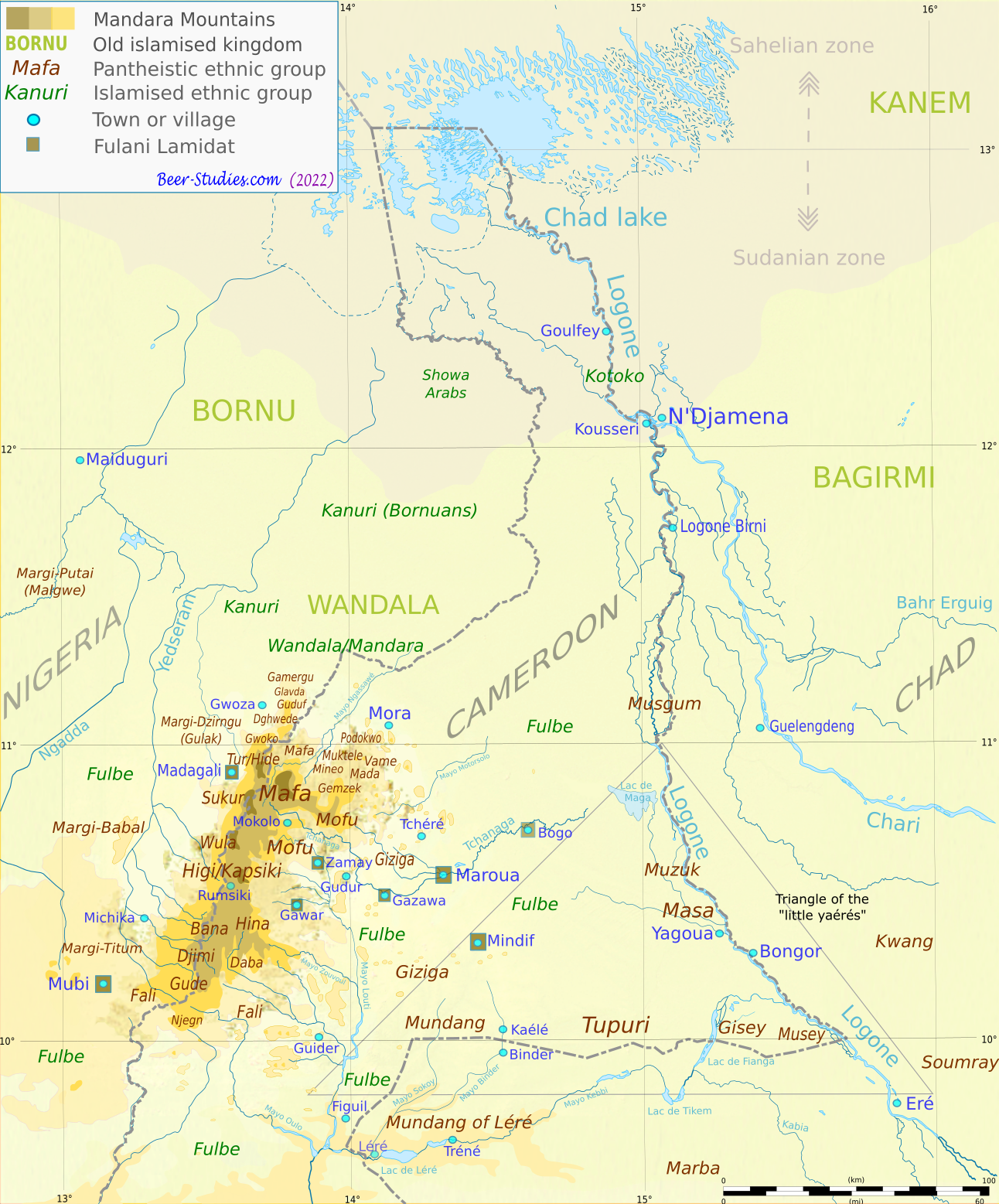
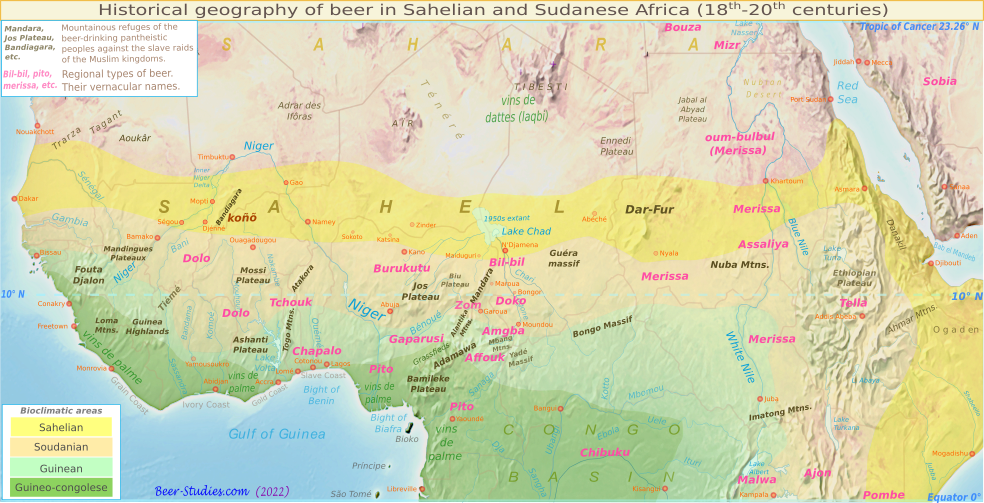
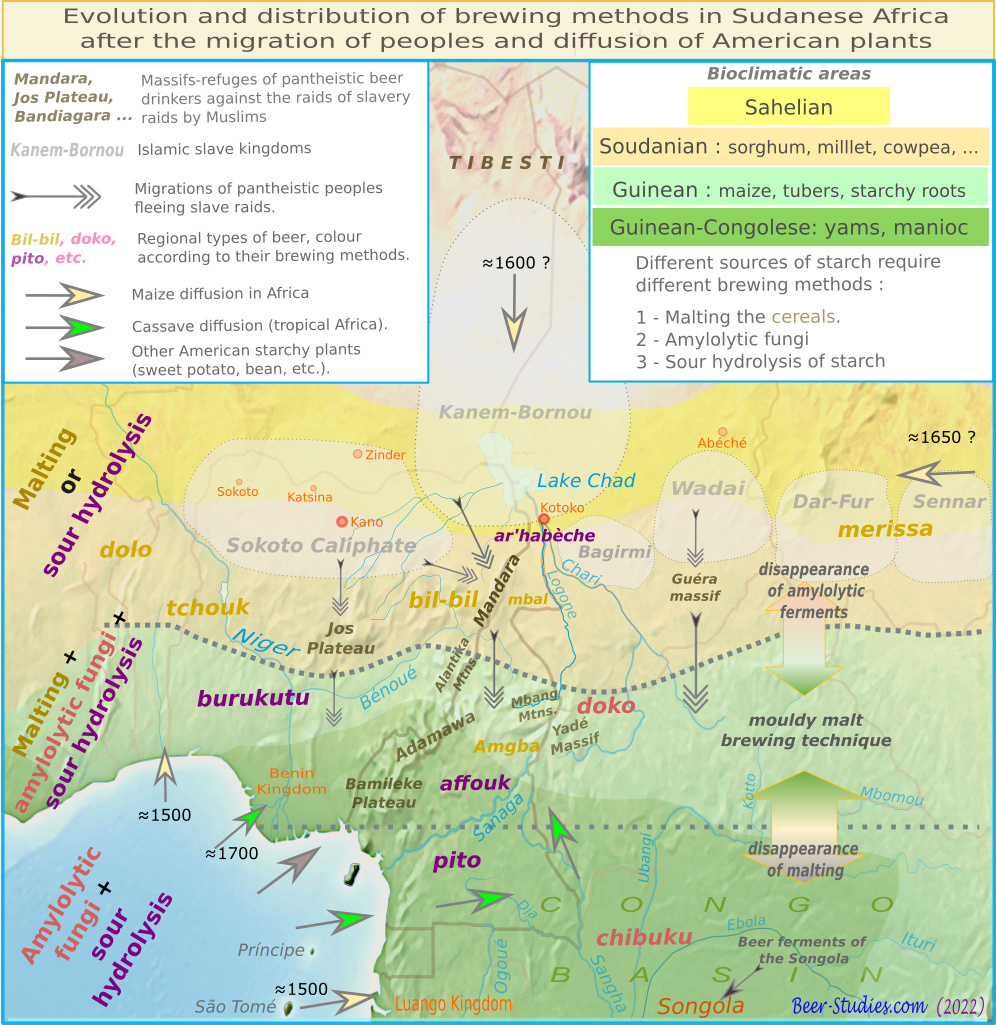


.png)
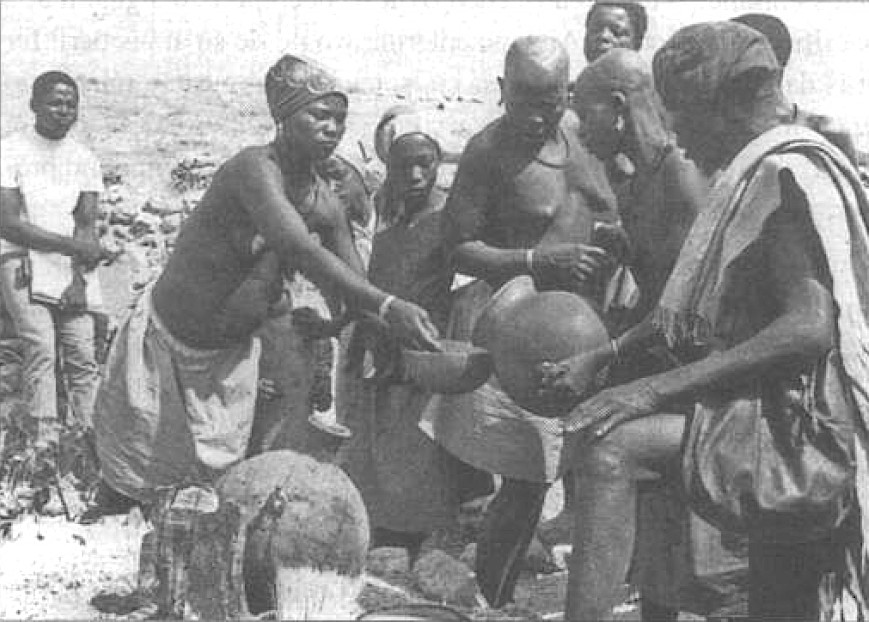
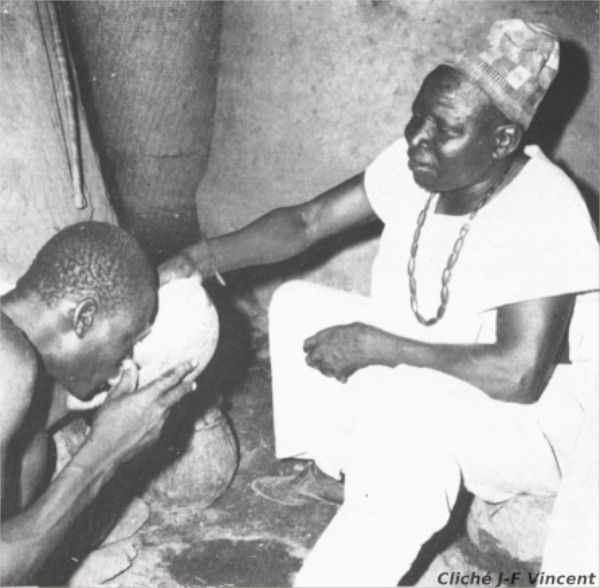
, Garine 2001, 57.png)
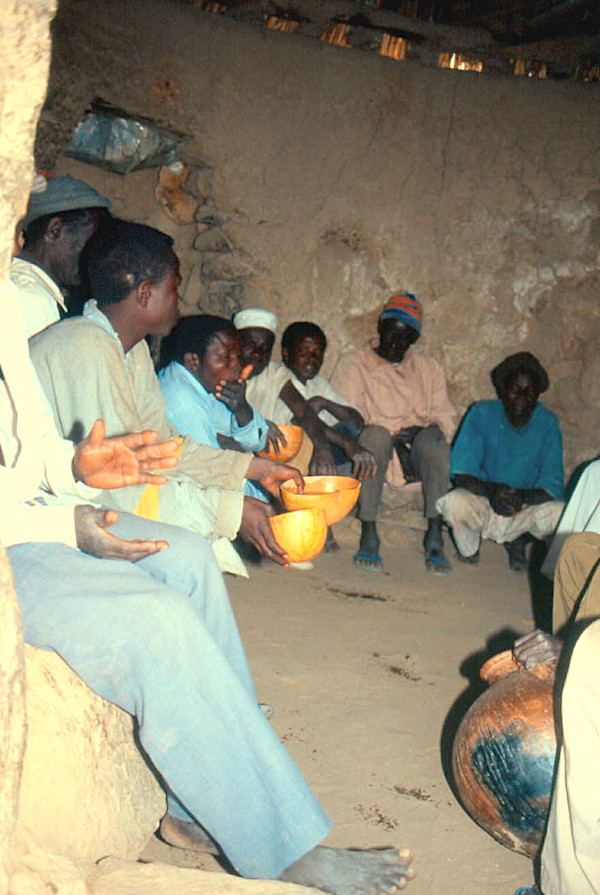
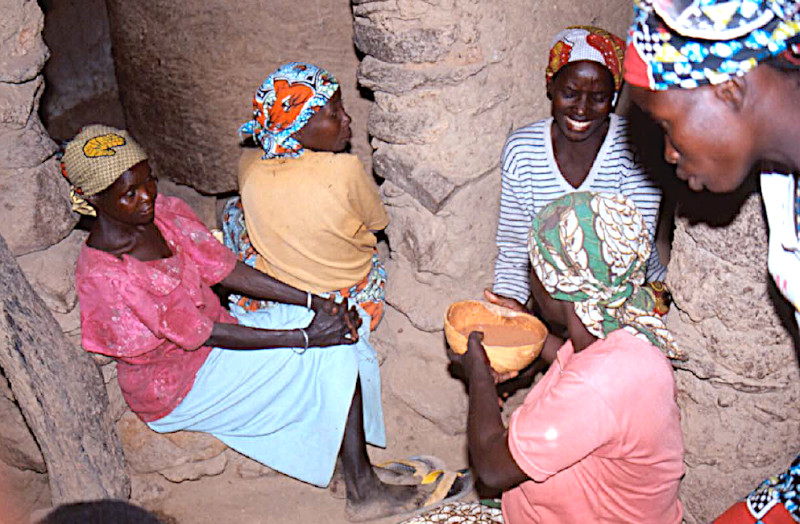
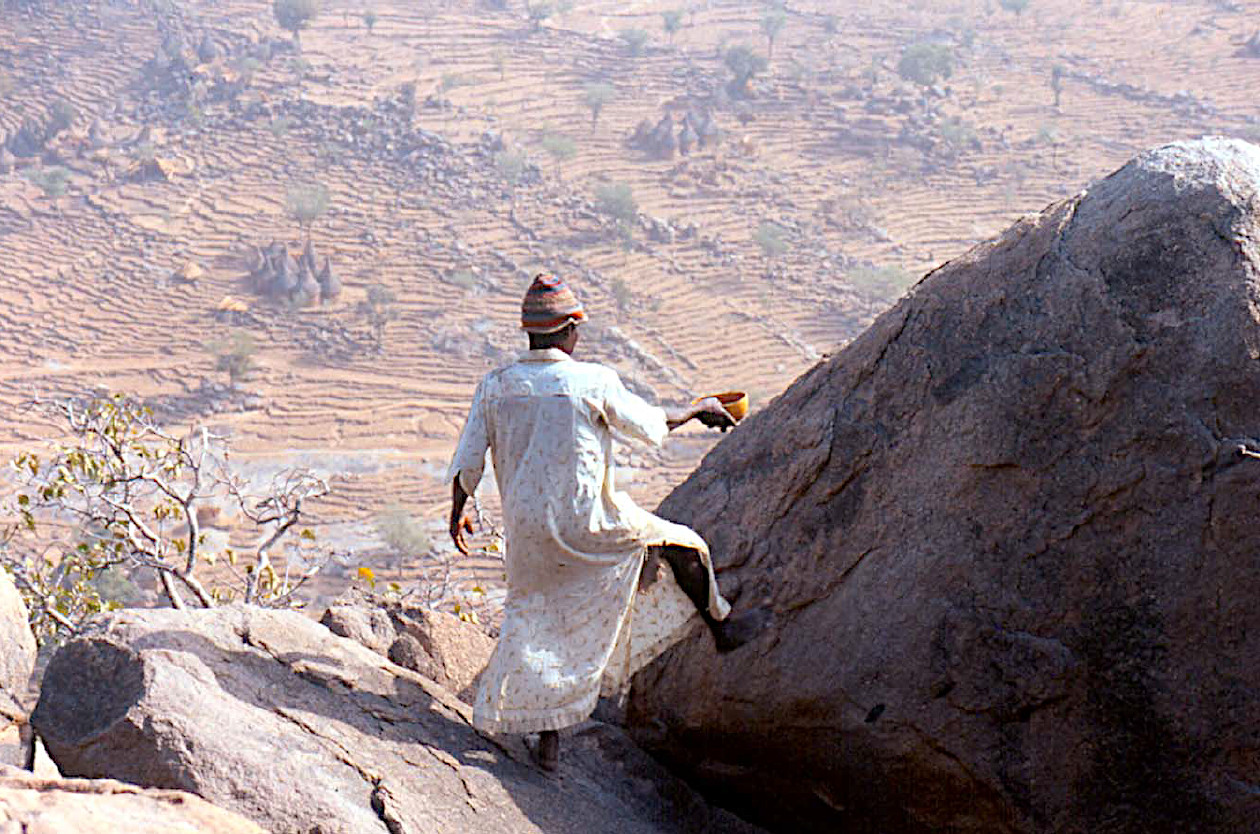
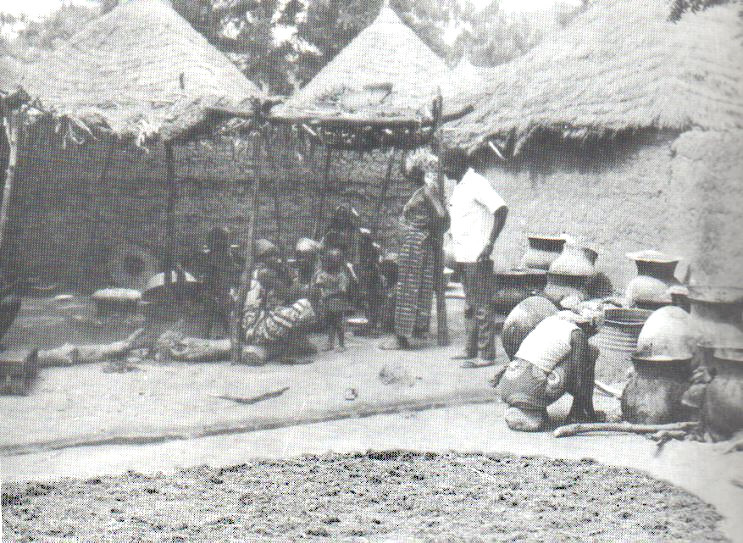
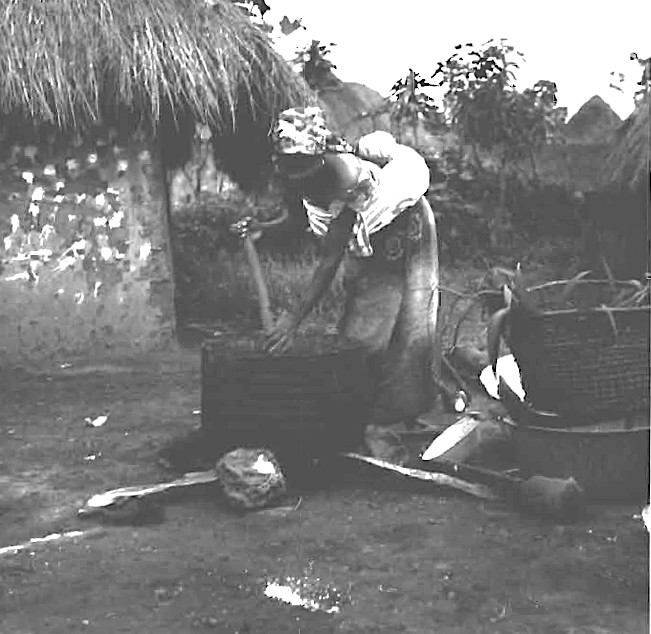
-EN.png)


_beer_brewing_diagram_after_Garine_2001-EN.png)